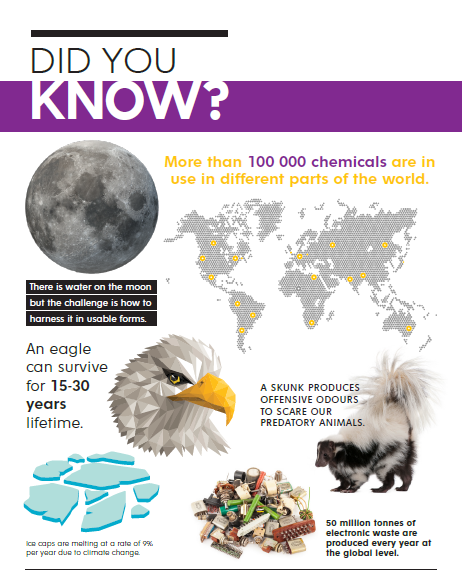Rufaro Mahaka travels from Kwekwe to Gwanda, a distance of 316 kilometres in one direction every year to harvest mopane worms. She has been doing this for the past 15 years and has been making a living which has seen her children going up to tertiary level. The business is thriving for Mahaka because mopane worms have a ready market in Kwekwe due to many artisanal miners but, deforestation is changing the trends in the yields of mopane worms, amancimbi in Ndebele and madora in Shona, every year. A concerned Mahaka says; it might affect them in a near future if unabated.
“Of late, we are seeing many of the trees are being cut down which can affect our business. We have already witnessed low harvests in these last years. It takes time for the trees to grow and every tree is special to us, because that is the source of the product which gives us business,” says Mahaka.
Matabeleland South in Zimbabwe is known for Mopane trees and its worms which create a hive of activity every year. Mopane worms (Imbrasia belina) are usually harvested in smaller quantities for relish, but not all parts of the country have the edible insects, which creates a demand for them. Matabeleland South areas like Gwanda, Mangwe and Mazwi have forests full of mopane trees. During the mopane worms harvest time, a range of forests is turned into a bustling industrial area as the harvest, processing and drying is done there, especially by the small-scale harvesters. Mopane worms can last for many months if they are properly processed.
Tonnes of mopane worms are loaded in sacks and containers before taken away to different warehouses, manufacturing plants and supermarkets and others for the street markets for business. On the street, a cup of mopane worms goes for a $1, while it fetches more than that price in a supermarket and upmarket setting. Mazwi community constructed the Matobo Processing Centre for packaging, storing and selling the mopane worms. The project buys mopane worms from the community members and packages them for sale to urban markets where the prices are higher. A hub of similar nature was commissioned also in Beitbridge, the Rovhona Raita Mopani Caterpillar Processing Centre.
The unregulated and illegal cutting down of trees by wood poachers and clearance of land for other uses is resulting in the depletion of the valuable mopane trees, threatening the business of mopane worms. The decline in mopane worms’ population is attributed to the charcoal vendors coming from other provinces. Of late, Zimbabwe is facing power outages resulting on the high demand of charcoal and firewood in towns and major cities, with near forests in towns cleared for residential expansion, firewood poachers are travelling miles to cut the trees. This is affecting the mopane worms harvest in Matabeleland South.
Mopane worms only feed on mopane worm leaves. In their absence, they are left to die of hunger. According to the Global Forest Watch, Zimbabwe had 1.06MHa of tree cover, extending over 2.7% of its land area in 2010 but, in 2020, it lost 6.22KHa of tree cover, equivalent to 2.84Mt of CO2 emissions.
Deforestation can directly lead to biodiversity loss when animal species that live in the trees have their habitat destroyed, cannot relocate and are forced to become extinct. Mopane trees are under pressure from communities as they are being cut for timber, poles, construction materials and firewood. Hundreds of mopane worms’ gatherers also contribute to deforestation as they cut down the same mopane tree for easy access of the worms whilst some also cut then down for firewood during their camping which can be for weeks or months.
Dried mopane worms have high protein content with 65.8% dry weight crude protein content and 53.3% dry weight digestible protein which make them to be on high demand. Tourists coming to Zimbabwe consider them as healthy snacks. Mopani worms have been considered a critical food security resource as people living in mopane woodlands depend on the worms both as a food source and as an income generating resource, especially in the drought prone areas of Matabeleland South.
Fortunes Felix Matutu, a forester, says there is need to empower local authorities so that they can collaborate with the Forestry Commission in implementing the provisions of the Communal Land Forest Produce Act (Chapter 19:04).
“This can be achieved through the development of supportive statutory instruments and local level by-laws to support the Act, which might soon find itself overtaken, by new developments because of emerging socio-economic dynamics, which are defining new social parameters in the management, and utilization of forest products and services,” says Matutu.
Stakeholders in the business says afforestation and improving the processing of the mopane worms will also improve their economic value and prospects of increased exports to nearby South Africa and Botswana with ready markets.
Mopane Worms Enterprises, a company dedicated to commercial farming of edible insects says the edible insect’s industry gives Zimbabwe the greatest opportunity to grab a huge market share.
“In 2017 Zimbabwean meat export were US$758 000.00 according to Forestry Commission and Matabeleland South produced an estimate of mopane worms valued at US$630 000.00. Mopane worms have potential to transform communities. There is huge window of opportunities to explore food, animal feed, agro-tourism, and foreign currency,”



